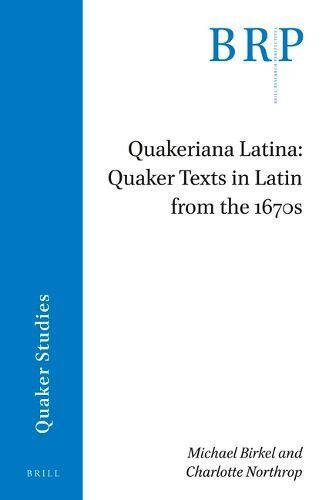Readings Newsletter
Become a Readings Member to make your shopping experience even easier.
Sign in or sign up for free!
You’re not far away from qualifying for FREE standard shipping within Australia
You’ve qualified for FREE standard shipping within Australia
The cart is loading…






Quakeriana Latina: Quaker texts in Latin from the 1670s juxtaposes translations of texts written in Latin by arguably the finest early Quaker theologians, George Keith and Robert Barclay. A commentary provides philological, historical, and theological perspectives. The works by Keith are two substantial letters to German polymath and Christian Kabbalist, Baron Christian Knorr von Rosenroth. The chief concerns of these letters are Christian appropriation of concepts from Jewish mysticism and eschatology. In the year before Keith began this correspondence, Barclay wrote his Animadversiones, a response to an attack from the Dutch Calvinist, Nikolaus Arnold, on his Theses Theologicae. Thus, both writers illustrate how a Quaker might write to a non-Quaker, even non-British, audience, one in a persuasive tone, and the other in a more polemical mode. Together, these texts cast new light on Quakerism in the 1670s.
$9.00 standard shipping within Australia
FREE standard shipping within Australia for orders over $100.00
Express & International shipping calculated at checkout
Quakeriana Latina: Quaker texts in Latin from the 1670s juxtaposes translations of texts written in Latin by arguably the finest early Quaker theologians, George Keith and Robert Barclay. A commentary provides philological, historical, and theological perspectives. The works by Keith are two substantial letters to German polymath and Christian Kabbalist, Baron Christian Knorr von Rosenroth. The chief concerns of these letters are Christian appropriation of concepts from Jewish mysticism and eschatology. In the year before Keith began this correspondence, Barclay wrote his Animadversiones, a response to an attack from the Dutch Calvinist, Nikolaus Arnold, on his Theses Theologicae. Thus, both writers illustrate how a Quaker might write to a non-Quaker, even non-British, audience, one in a persuasive tone, and the other in a more polemical mode. Together, these texts cast new light on Quakerism in the 1670s.